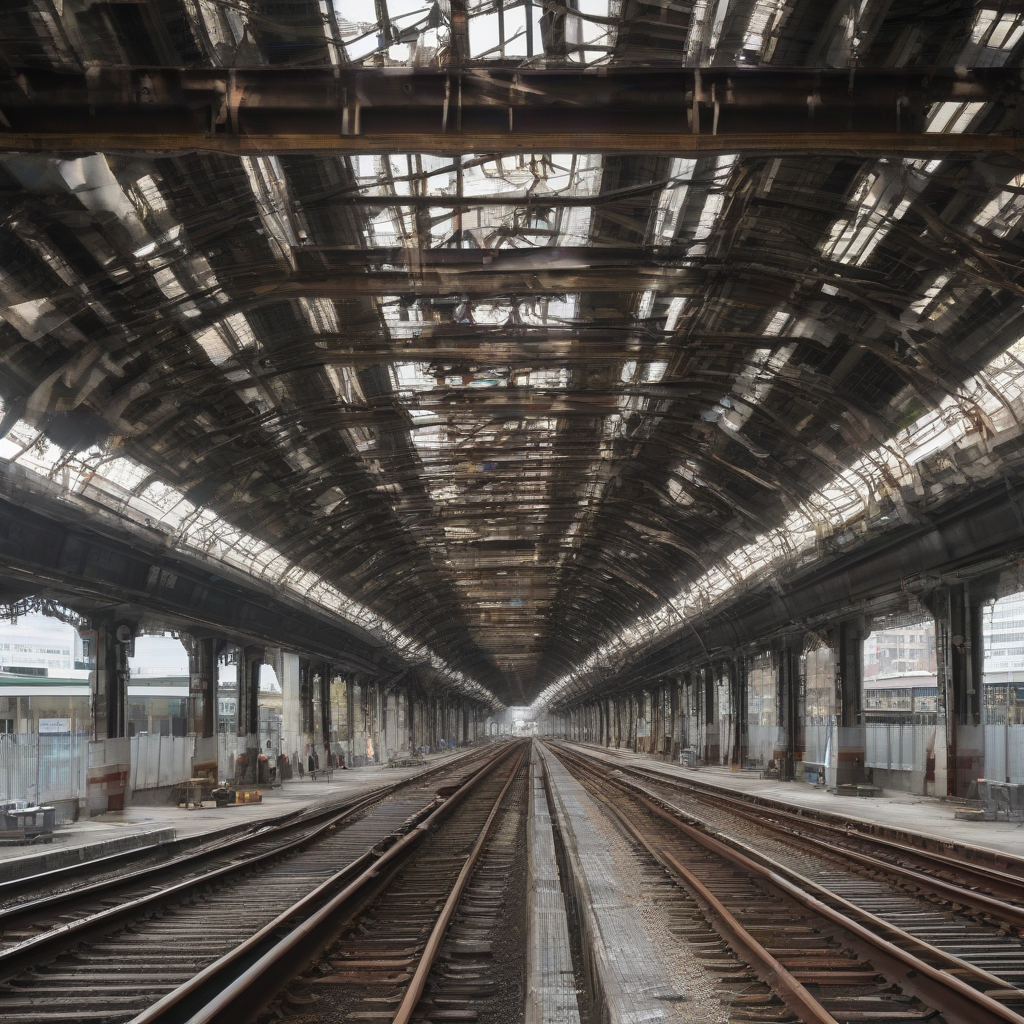Revitalizing the Rails: A Comprehensive Look at Consolidated Rail Infrastructure and Safety Enhancements
The state of a nation’s rail infrastructure is intrinsically linked to its economic vitality and public safety. A robust, efficient, and safe rail network is crucial for transporting goods, facilitating commerce, and ensuring the reliable movement of people. However, decades of underinvestment and deferred maintenance have left many rail systems in a state of disrepair, necessitating a concerted effort towards consolidated infrastructure improvements and comprehensive safety enhancements.
The Urgent Need for Consolidation and Modernization
Fragmented rail networks often suffer from inefficiencies stemming from a lack of interoperability and standardized practices. Consolidation, in this context, involves streamlining operations, coordinating maintenance schedules, and integrating disparate systems to create a more unified and efficient network. This includes:
- Track Standardization: Adopting consistent track gauges and signaling systems across different lines eliminates bottlenecks and allows for seamless freight and passenger transportation.
- Improved Signaling and Communication Systems: Implementing advanced signaling technologies, such as Positive Train Control (PTC), significantly reduces the risk of collisions and derailments by providing real-time monitoring and control of train movements.
- Streamlined Freight Operations: Consolidating freight handling and reducing unnecessary switching maneuvers can expedite the delivery of goods and enhance overall efficiency.
- Intermodal Transportation Integration: Seamlessly connecting rail with other modes of transportation, such as trucking and shipping, creates a more efficient and flexible logistics network.
- Enhanced Data Management: Centralized data management systems can provide real-time insights into train operations, allowing for proactive maintenance and efficient resource allocation.
Safety Enhancements: A Multifaceted Approach
Rail safety is paramount, and achieving it requires a multi-pronged strategy focusing on technological upgrades, improved operational procedures, and enhanced workforce training. Key areas for improvement include:
- Positive Train Control (PTC) Implementation: PTC is a crucial safety technology that automatically prevents train-to-train collisions, overspeed derailments, and unauthorized incursions into work zones. Full nationwide implementation is critical.
- Track Inspection and Maintenance: Regular and thorough track inspections, coupled with timely maintenance, are essential for identifying and addressing potential hazards before they lead to accidents.
- Improved Rolling Stock Maintenance: Ensuring that locomotives and railcars are properly maintained and regularly inspected is vital for preventing mechanical failures that could lead to derailments or other accidents.
- Enhanced Crossing Safety: Improving railway crossings through better signage, improved warning systems (including active warning systems at high-risk crossings), and increased enforcement of safety regulations can significantly reduce accidents at grade crossings.
- Emergency Response Planning: Developing comprehensive emergency response plans, including drills and training exercises, is crucial for effective response to accidents and minimizing their impact.
- Human Factors Analysis: Understanding human factors, such as fatigue and stress, that contribute to accidents is critical for developing strategies to mitigate these risks. This includes implementing fatigue management programs and improving crew rest facilities.
Funding and Investment Strategies
Significant investment is required to achieve meaningful improvements in rail infrastructure and safety. Funding strategies should encompass a mix of public and private investment, including:
- Increased Government Funding: Dedicated government funding is essential for large-scale infrastructure projects and for supporting safety initiatives.
- Public-Private Partnerships (PPPs): PPPs can leverage private sector expertise and capital to finance and manage infrastructure projects.
- Infrastructure Bonds: Issuing infrastructure bonds can attract private investment while providing a long-term funding source.
- User Fees and Tolls: Strategically implemented user fees and tolls can generate revenue to support ongoing maintenance and improvements.
- Carbon Tax Revenue: A portion of carbon tax revenue could be allocated to fund environmentally friendly rail infrastructure improvements.
Technological Advancements and Innovation
Technological advancements offer significant opportunities to enhance rail infrastructure and safety. These include:
- Advanced Sensors and Monitoring Systems: Real-time monitoring of track conditions, train performance, and environmental factors can enable proactive maintenance and prevent accidents.
- Artificial Intelligence (AI) and Machine Learning (ML): AI and ML can be used to optimize train schedules, predict maintenance needs, and improve safety protocols.
- High-Speed Rail Technology: Investing in high-speed rail technology can significantly reduce travel times and improve the overall efficiency of passenger transport.
- Autonomous Train Technology: While still in the developmental stages, autonomous train technology holds the potential to improve safety and efficiency in the long term.
- Digital Twin Technology: Creating digital twins of rail networks allows for simulation and testing of various scenarios, enabling better planning and problem-solving.
Addressing Challenges and Obstacles
Implementing consolidated infrastructure improvements and safety enhancements is not without its challenges. These include:
- High Initial Investment Costs: The upfront cost of upgrading rail infrastructure can be substantial, requiring careful planning and resource allocation.
- Political and Regulatory Hurdles: Navigating political and regulatory complexities can delay projects and increase costs.
- Environmental Concerns: Environmental impact assessments and mitigation strategies are crucial to ensure sustainable development.
- Community Engagement: Effective community engagement is essential to address concerns and secure local support for projects.
- Workforce Development: Investing in workforce training and development is crucial to ensure that workers possess the skills and knowledge needed to operate and maintain the upgraded infrastructure.
Long-Term Benefits and Sustainability
Investing in consolidated rail infrastructure and safety improvements offers substantial long-term benefits, including:
- Economic Growth: Improved rail networks facilitate trade, reduce transportation costs, and stimulate economic activity.
- Reduced Congestion: Shifting freight transport from roads to rail can alleviate highway congestion and reduce traffic accidents.
- Environmental Benefits: Rail transport is significantly more energy-efficient and environmentally friendly than road transport.
- Improved Public Safety: Enhanced safety measures reduce the risk of accidents and improve overall public safety.
- Enhanced National Security: A robust and efficient rail network strengthens national resilience and security by ensuring the reliable transportation of goods and people.
In conclusion, a concerted effort towards consolidated rail infrastructure and safety improvements is not merely a matter of modernization; it is a crucial investment in a nation’s future. By addressing the challenges, embracing innovation, and fostering collaboration, we can build a rail system that is efficient, safe, and sustainable for generations to come. The revitalization of our rail networks is not just an infrastructure project; it’s an investment in economic prosperity, public safety, and environmental stewardship.





